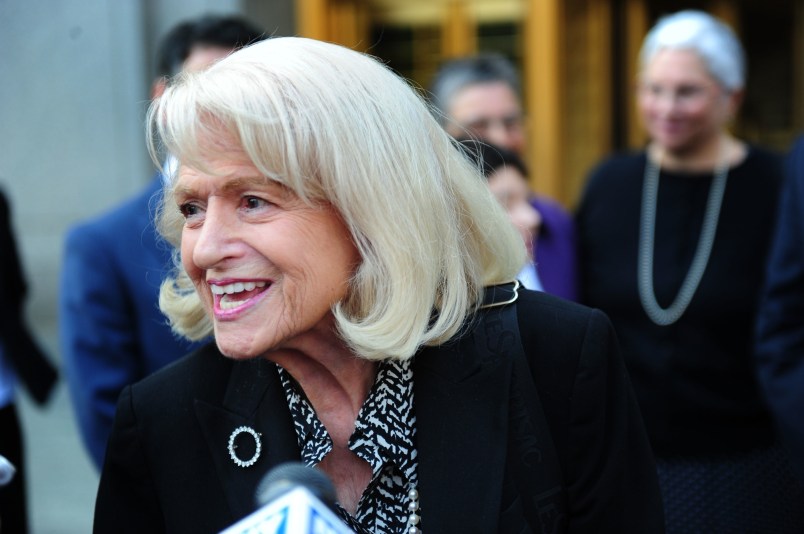In a major advancement for gay rights advocates, the Second Circuit Court of Appeals ruled Thursday that a key section of the Defense of Marriage Act — a Clinton-era law defining marriage legally as union between one woman and one man — violates the Constitution’s guarantee of equal protection under the law.
Under DOMA, the federal government and most states decline to recognize same-sex couples who have been legally married. Those couples have been denied the same legal protections that people in same-sex marriages are provided.
In this case, the Second Circuit determined it was unconstitutional for the federal government to require 83-year-old Edith Windsor to pay over $300,000 in estate taxes after the death of her spouse Thea Spyer. Windsor and Spyer lived in New York, but married in Toronto, Canada, in 2007, after a 40-year partnership. When Spyer died in 2009, New York had not yet legalized same sex marriage, and thus the federal government required Windsor to pay taxes on Spyer’s estate — a burden that wouldn’t have befallen an opposite-sex couple, whether married in or out of state.
In February 2011, the Justice Department halted its defense of DOMA, upsetting House Republicans who have spent over $1 million defending it in the Obama administration’s stead.
“Notwithstanding the withdrawal of its advocacy, the United States continues to enforce Section 3 of DOMA, which is indeed why Windsor does not have her money,” the opinion reads. “The constitutionality of the statute will have a considerable impact on many operations of the United States.”
Judge Dennis Jacobs, who authored the opinion, is the circuit’s chief judge and was appointed to the court in 1992 by President George H.W. Bush.
The New York federal appeals court is the second in the country, after the First Circuit in Boston, to find the law unconstitutional.










